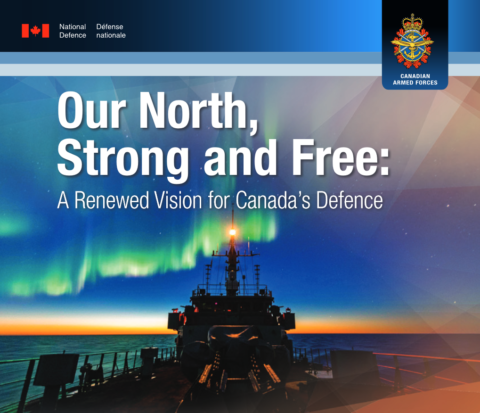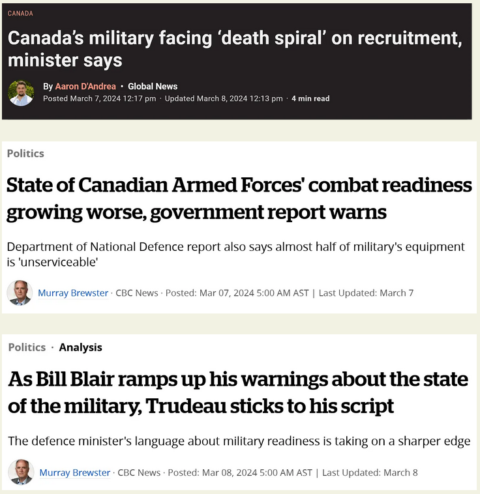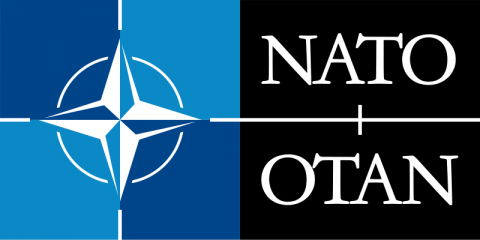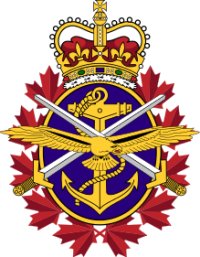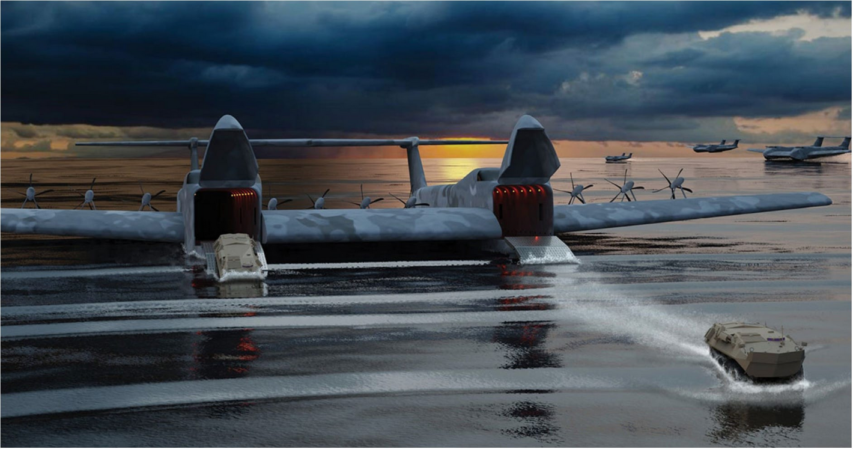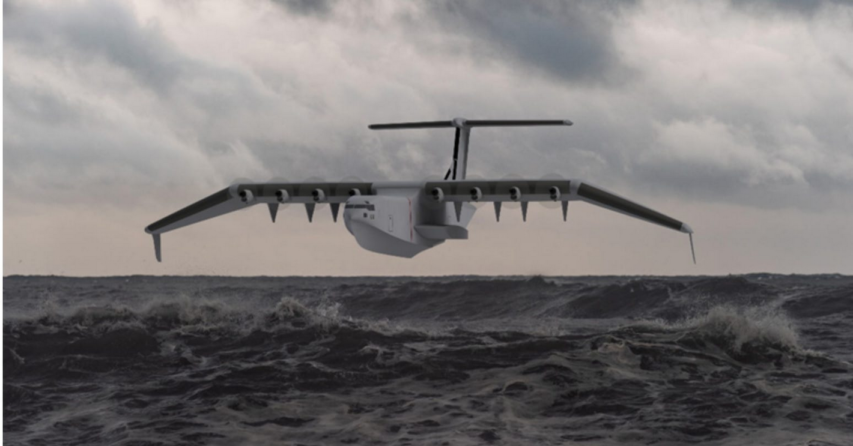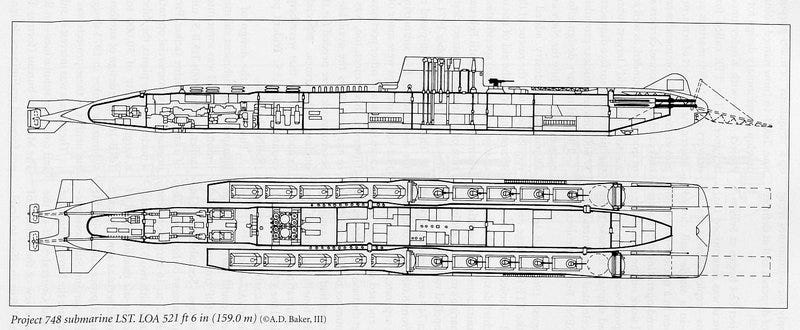Esprit de Corps Canadian Military Magazine
Published Apr 22, 2024The Liberal government have finally released their long awaited Defence Policy Update which promises billions of dollars in increased spending for the CAF. Critics wonder if such promises are worth the paper they are printed on. History says that when it comes to military budgets, promises are made to be broken. Good Grief.
(more…)
April 23, 2024
KICKING IT TO THE MOON? Canada’s Military Procurement: A history of broken promises
April 21, 2024
Canada’s latest unlikely-to-meet-expectations defence update
In The Line, Michael Den Tandt considers the Trudeau government’s most recent update to Canada’s defence plans (where the cynic might be tempted to read “plans” as “vague gestures toward treaty obligations with no real intent to do more”):
… Among the more intriguing findings is that no likely economic path has China overtaking the United States in terms of global influence, between now and 2040. And all likely paths project a sharp decline in global population growth over the same period, including in China.
This is worrying, because declining population growth is a precursor to declining economic power, which in turn means declining military might, and also a tendency to lash out. As the American political scientist Michael Beckley has noted, there is a lengthy historical pattern of rising powers becoming expansionist when their initial economic boom slows. In a prolonged multipolar interregnum between the U.S.-led order that followed the Second World War, and whatever comes next, threats will continue to multiply. A capable military is essential to national survival.
Which brings us back to the federal defence update, and its raft of new spending, with $8.1 billion in additional funding by 2029-30, by which time Canada’s military spending will reach just under 1.8 per cent of GDP, with steady increases adding up to $72.3-billion by 2043-44. Commitments include ramping up recruitment, revamping procurement, new subs for the Arctic, tactical helicopters, new vehicles and long-range missiles, drones, a new Canadian Cyber Command, and more. There is a laudable commitment to developing reserves of ammunition.
The commitment — as was a prior promise, from 2022, to spend $38 billion on NORAD modernization over 20 years — is all to the good.
But the elephant in the room, when it comes to federal defence commitments, is that we’ve seen these before, from both major governing parties, with disappointing results. The purchase of new fighters for the Royal Canadian Air Force was first announced in July of 2010. The rebuild of the Royal Canadian Navy’s surface combatants, replacements for the 1980s-era frigates, was first announced in the fall of 2011. We don’t yet have either new fighter jets or new surface combatants. And the vast majority of funding outlined in the updated policy statement will be up to future governments. Net incremental new spending in 2024-25 is just $612 million.
There was a historical moment, not long ago, when Canadian military preparedness advanced at a wartime pace — when Canadian soldiers were fighting and dying in Afghanistan. From 2005 through 2010, the governments of Canada, initially Liberal, then Conservative, set about getting our soldiers the kit and equipment they needed. In short order the CAF acquired Chinook helicopters, Boeing C-17s and Hercules C-130 transports, and more. It is possible.
The great risk in building up Canada’s defences at a leisurely, peacetime rate, is that the days of leisurely, peacetime stability are over. The update can be counted as progress. But it needs a major infusion of urgency.
April 18, 2024
On The Line with General Wayne Eyre, commander of the Canadian Armed Forces
The Line
Published Apr 16, 2024General Wayne Eyre served for decades in the Canadian Army, including as its commander, before being promoted to Chief of the Defence Staff in 2021. During his time as Canada’s top soldier, he has overseen not only a series of challenges inside the Canadian military, but also a rapid deterioration in the geopolitical environment. The world is a more dangerous place, and Gen. Eyre has been unusually outspoken in noting that Canada needs to do more to be ready for what’s coming.
In this conversation with The Line‘s Matt Gurney, the general provides his take on the state of the world today, shares his thoughts on the recently announced Defence Policy Update, and talks about why he is encouraged by some of what he is already seeing change with Canada’s military readiness.
On The Line is The Line‘s newest podcast, featuring longer interviews by either Jen or Matt with someone who is currently in the news or able to speak to something topical (or, sometimes, simply fun and interesting). We are still getting it up to speed, but Line listeners and viewers can expect an episode weekly by next month, at the latest.
To never miss an episode of either On The Line or The Line Podcast, sign up today to follow us on YouTube, on the streaming app of your choice and, of course, at ReadtheLine.ca, home of The Line. Like and subscribe!
Please note: This interview was recorded on Friday, before the Iranian attack on Israel.
March 28, 2024
Justin Trudeau never misses an opportunity to make a performative announcement, even if it harms Canadian interests
Canadian Prime Minister Justin Trudeau made an announcement last week that the Canadian government was cutting off military exports to Israel … except that Canada buys more military equipment from Israel than vice-versa:
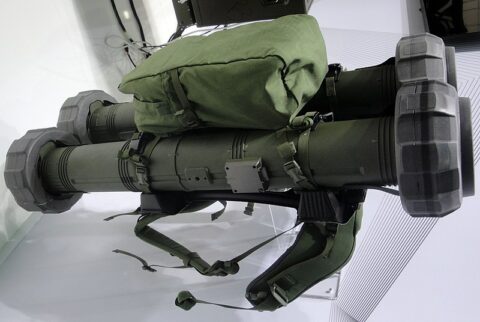
Israeli Spike LR2 antitank missile launchers, similar to the ones delivered to the Canadian Army detachment in Latvia in February.
Wikimedia Commons.
When the Trudeau government publicly cut off military exports to Israel last week, the immediate reaction of the Israeli media was to point out that Canada’s military was far more dependent on Israeli tech than was ever the case in reverse.
“For some reason, (Foreign Minister Melanie Joly) forgot that in the last decade, the Canadian Defense Ministry purchased Israeli weapon systems worth more than a billion dollars,” read an analysis by the Jerusalem Post, which noted that Israeli military technology is “protecting Canadian pilots, fighters, and naval combatants around the world.”
According to Canada’s own records, meanwhile, the Israel Defense Forces were only ever purchasing a fraction of that amount from Canadian military manufacturers.
In 2022 — the last year for which data is publicly available — Canada exported $21,329,783.93 in “military goods” to Israel.
This didn’t even place Israel among the top 10 buyers of Canadian military goods for that year. Saudi Arabia, notably, ranked as 2022’s biggest non-U.S. buyer of Canadian military goods at $1.15 billion — more than 50 times the Israeli figure.
What’s more — despite Joly adopting activist claims that Canada was selling “arms” to Israel — the Canadian exports were almost entirely non-lethal.
“Global Affairs Canada can confirm that Canada has not received any requests, and therefore not issued any permits, for full weapon systems for major conventional arms or light weapons to Israel for over 30 years,” Global Affairs said in a February statement to the Qatari-owned news outlet Al Jazeera.
The department added, “the permits which have been granted since October 7, 2023, are for the export of non-lethal equipment.”
Even Project Ploughshares — an Ontario non-profit that has been among the loudest advocates for Canada to shut off Israeli exports — acknowledged in a December report that recent Canadian exports mostly consisted of parts for the F-35 fighter jet.
“According to industry representatives and Canadian officials, all F-35s produced include Canadian-made parts and components,” wrote the group.
March 12, 2024
The recently admitted “death spiral” for the Canadian Armed Forces is nothing new
“Shady Maples” outlines just a few of the historical procurement fuckups Canada’s armed forces have had to work through, showing that the recent admission that the armed forces are in a “death spiral” by MND Bill Blair is almost “situation normal” for the troops:
The Canadian Armed Forces are fucked. By this term of art, I mean that the CAF:
- are in dire circumstances; and
- are being used for such aggressive political gratification that it’s practically perverse.
You don’t have to take my word for it. The Minister of National Defence made the following remarks last week:
because, the bottom line is the Canadian Armed Forces must grow. We’re short a lot of people. Almost 16,000 in our regular forces and reserves.
If that wasn’t bad enough, he added:
more than half of our trucks, more than half of our ships and more than half of our planes are not available for service because they are in need of parts and repair. We’re going to have to do better.
Translation: we are fucked.
The MND’s remarks come eleven months after the CDAI published an open letter on the state of national security and defence:
Years of restraint, cost cutting, downsizing and deferred investments, have meant that Canada’s defence capabilities have atrophied. Our military capabilities are outdated and woefully inadequate to protect our landmass and maritime approaches. We have also fallen short in meaningful contributions to burden sharing for the collective defence and security of our allies and partners.
Translation: we have been fucked for awhile.
More recently, the Vice Admiral Tophsee made waves on the RCN’s official YouTube channel by stating the obvious:
Colleagues and Shipmates, the RCN is facing some very serious challenges right now that could mean we fail to meet our Force Posture and Readiness commitments in 2024 and beyond. La situation est grave mais nos problèmes ne sont pas uniques et je sais que l’aviation et l’armée sont confrontées a des défis similaires. [The situation is serious, but our problems are not unique, and I know that the Air Force and the Army are facing similar problems.]
Translation: we will be fucked for the foreseeable future.
He then shows that this sort of thing has been part-and-parcel of Canada’s delusionary approach to national defence since the year before Confederation. Canada’s WW1 army was sent off with fantastically bad equipment — from rifles to web gear, from automobiles to artillery ammunition — all scandals of the day that no lessons were learned from.
Soldiers and officers at the tactical level will readily tell you that these headlines are only surprising because senior leaders are finally saying the quiet part out loud: the CAF is undermanned, under-equipped, under-trained, and unprepared. We know this because we live it every day: situation normal, all fucked up. But you don’t need a source or a leak to learn about our deplorable state of readiness. Here is a link to DND’s 2023 audit and evaluation reports. They paint a bleak picture: we have insufficient equipment and what we have keeps breaking. We have insufficient personnel to match with commitments, and we are struggling to recruit, train, and retain more. Go have a look at the reports, they lay it all out.
February 22, 2024
Trump’s crude, threatening rhetoric on NATO’s cheapskates is … right
In The Line, Philippe Lagassé joins all right-thinking people in condemning Donald Trump’s campaign trail threats to not defend NATO’s freeloaders if they’re attacked by, say, Vladimir Putin:
Donald Trump recently called into question the core principle of the North Atlantic Treaty Organization (NATO). As a collective defence alliance, NATO operates on the principle that an attack against one member is an attack against all. This principle is enshrined in Article 5 of the NATO agreement. Although Article 5 allows each ally to respond as they see fit, there’s an understanding that allies have an obligation to defend each other.
On the campaign trail, Trump declared that, if elected, he wouldn’t defend NATO allies if they’ve failed to spend two per cent of their Gross Domestic Product (GDP) on defence. Not only that, he said he’d encourage Russia to attack these allies. As Trump reiterated last week: “Look, if they’re not going to pay, we’re not going to protect, okay?” These comments raised serious concerns within NATO. Jens Stoltenberg, NATO Secretary General, warned that Trump is striking at the underlying logic of the alliance. The Secretary General stressed that “We should not undermine the credibility of NATO’s deterrent”.
What should we make of Trump’s threat? On the one hand, it’s clearly dangerous and evidence that a second Trump presidency could shake the foundations of the alliance. We should rightly be worried and condemn such reckless rhetoric. On the other hand, this is classic Trump. His approach to international politics can best be understood as “mobster diplomacy”. He demands personal loyalty as the head of the “family” of Western liberal democracies. When it comes to trade deals, he echoes Don Corleone in making offers that partners can’t refuse. As for alliances, he sees them as a protection racket. When it comes to NATO allies, his message is simple and direct: “Nice country you have there … pity if something happened to it”.
Allied leaders and academics can protest that the two per cent target isn’t a payment to the United States; it’s a measure of the relative amount allies spend on their own militaries, not a fee they owe Washington. While true, it’s a waste of breath to point this out. Trump and his supporters don’t care. They see most allies as freeloaders who’ve been coasting on American military power for too long. And you know what? They’re not wrong. That’s the rub for those who are understandably horrified by Trump’s comments. Far too many NATO allies, including Canada, have been content let the United States carry a heavy defence spending burden, while we focus on other priorities. That’s what Trump is ultimately getting at here, however menacingly.
Canada has been particularly unwilling to pay its agreed share, actually cutting the military budget late last year while many of our European allies were increasing theirs. We’re habitually the ones who slip out of the room when it’s our turn to buy a round, militarily speaking.
December 26, 2023
Canada is the unchallenged international champion of “the gesture” and “the pose”, yet always manages to be out of the room when the bill needs to be paid
Sorry for being several days behind on this, but Matt Gurney‘s message — while necessary and timely — does not have a “best-before” or an expiration date … it’s going to be valid for a long time to come:
On the military front, Canada has actually made some meaningful investments since that speech was given. We have announced deals for new transport and refuelling jets — desperately needed and long overdue. We more recently announced a plan to sole-source new surveillance planes, also desperately needed and long overdue. We also, just this week, announced that we are procuring a fleet of large, long-ranged, armed surveillance drones, to patrol our remote air and sea frontiers, after a mere two decades of mulling it over.
There ends the good news, sadly. Most of these procurements are many years away from actually being in service. And even once we have them, as good as the new equipment will be, the biggest problem for the military today is a crippling personnel shortage. The military is, to be blunt, a disaster. Far worse than is generally known. I’ve been covering military and defence issues for longer than I care to recount, and I can tell you plainly, dear readers, that the level of panicked leaking and lamenting coming out of the Canadian Armed Forces is like nothing I’ve ever seen. We don’t have the troops, sailors and aircrew to meet even basic obligations. Training is falling behind. The in-service availability of equipment and vehicles is appallingly low for lack of trained maintenance personnel and money for spare parts and equipment.
This is showing up in operations. The army doesn’t have enough soldiers to meet every commitment. The air force has cut back on operations. The navy’s top admiral is openly speaking, in public, about the crisis in his service.
We at The Line often talk about the Canadian love of talking about inputs instead of outputs. It’s easier to say “Our government has committed X dollars over Y years to address Societal Problem Z” than it is to actually ever have to answer to the public about why Z is somehow still getting worse. New procurements are an input; the desired output is a functional Canadian Armed Forces, capable of meeting its domestic obligations, honouring our treaty commitments and also being prepared for any unexpected contingencies. We do not have that military today. We cannot have that military for years. It would take massive investments and sustained effort to begin fixing this problem.
That is not happening. Hell, we took Anita Anand, one of Justin Trudeau’s better ministers and replaced her with Blair, a man for whom that has never been said. I can tell you with certainty that our allies, and our senior military commanders, had no trouble reading between those lines. Trudeau thought the military mattered, briefly, but then he stopped thinking that, and here we are.
So, 14 months out from Freeland’s speech and on the military front, well … Merry Christmas, or something?
But wait! There’s more!
Freeland’s speech also talked about other ways Canada could support its allies, and democracies in general. Some of it was vague and aspirational — hard to measure or follow-up on. But she was specific about two things: providing our threatened allies and the democracies broadly with a stable, democratic and reliable source of critical strategic resources. Energy, for example. And minerals.
Fourteen months later, how are we doing on those fronts?
I’m not an expert in either area, but I know experts in both. Andrew Leach is an energy and environmental economist at the University of Alberta (I literally copied that bio right off his webpage there). He is also, simply put, one of the smartest guys on the energy file in this country. I called him this week and found him grading papers, which is probably why he was so willing to talk with me. I explained to him what I was doing with the Brookings speech, and asked him if there was anything he could point to over the last 14 months as signs that we’d gotten serious and were doing as Freeland had said we would and must.
Nope!
“By any metric, it’s worse today,” Leach said. Two months ago, he noted, the Supreme Court ruled against the Trudeau government’s energy policies. “Now, there are no clear processes to get approvals for anything,” he added, except, somewhat ironically, pipelines, whose approvals process wasn’t included in the court ruling. I asked him if this was something the Trudeau government had done to itself, or if it was a victim of happenstance, and he said that some of the legislation they were dealing with dated back to the Harper era — before their time — but that in general, the Trudeau government hadn’t handled this well. “They messed up. They assumed they had powers they didn’t have, and didn’t make the arguments for those powers. They didn’t think about the framing. They had to earn that. They didn’t.”
October 29, 2023
Arguments for not buying military kit “off the shelf”
Sir Humphrey provides some of the reasons why it’s not a simple economic case for a nation’s military procurement to buy “off the shelf” equipment even from a close ally:
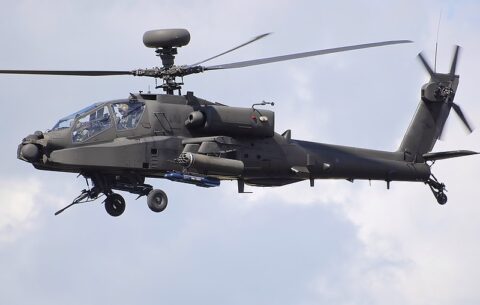
Not all kit needs to be or can be domestically sourced. The British army uses Apache attack helicopters which are licensed from the original US manufacturer.
Westland Apache WAH-64D Longbow helicopter (UK Army registration ZJ206) displays at Kemble Air Day 2008, Kemble Airport, Gloucestershire, England in June 2008.
Public domain photograph by Adrian Pingstone.
The arguments for buying American are on the face of it reasonable. The US produces good quality equipment able to meet many UK defence needs. There is a strong supply chain in place, ensuring that there are plenty of spare parts in the system to draw on when needed, and at cheaper cost due to bulk buying. The equipment is usually designed to be interoperable with NATO partners, so it can be integrated to work alongside allies and with existing equipment. It can be delivered quickly, it works and lots of other people use it, so why shouldn’t the UK? There are in fact many good reasons why the UK should not exclusively buy American.
Earlier this month, we looked at the Canadian Surface Combatant (CSC) program and why the Canadian Armed Forces never seemed to get the same “bang for the buck” that our American or British allies seem to manage. Here, Sir Humphrey points out that even the British military has to make procurement decisions that weigh cost and convenience with some very significant national security concerns:
To start with, US kit is designed by US companies to meet US requirements, not British ones. This may sound obvious but there is a dangerous view some put forward that “off the shelf” means the UK could just buy something and use it. There is no such thing as “off the shelf” unless you want it as it comes in its US version, with no modifications, changes or installation of British equipment. The moment you do this, you’ve created a UK variant with its own bespoke requirements and supply needs, for which you are dependent on the US defence industry to support – and there is no guarantee that this can or will happen. From the outset you have lost operational sovereignty and control over your military equipment.
Buying from the US means the UK would need to request a Foreign Military Sale (FMS) case through the US government, seeking legislative approval to purchase the equipment. If, for example, the UK wanted to buy a new tank, it would be reliant on US government approval to do so, not just for the initial purchase, but for all spares buy thereafter. The way that FMS works is that it sets out approval not just for purchase, but sets a schedule for spare parts purchases, services, and upgrades, all of which are done at the time and schedule set by US government and industry, and not the British government. This means that the UK would lose control over when to purchase spares or upgrades and would be forced to buy to a foreign governments timetable. This is why FMS is so successful for the US – it offers cheap entry prices but makes a killing in the long-term spares and support market. To buy from the US means to accept that you are handing over control of your spares and logistics chain to a foreign power who determines the timing of when and what you buy. This is fine in small doses but if you buy exclusively from the US, suddenly means you’ve got no control over how you want to support your armed forces.
The next challenge is the integration work needed to make things work for the UK. One of the risks of buying a foreign design is that you lack operational sovereignty over the design and its internal contents. Equipment supplied by the US will often come with a variety of sealed, tamper proof boxes containing US government-controlled technology that cannot be accessed by the purchasing nation. As the operator, you do not have full control over your military equipment, you don’t know what is necessarily in the boxes, and you are reliant on the US to fix issues with them. By contrast any equipment designed and built in the UK means that the MOD has full control and sovereignty over it to open it up, modify, adapt or change it to meet British needs. To buy US means accepting we cannot change a design without a foreign nations’ approval, which in turn means exposing our own sensitive military technology and equipment to the US, to conduct trials to ensure it can work with the US provided equipment. This represents an astounding loss of sovereign control on advanced weapon systems and means potentially giving the US defence industry insight into UK capabilities that manufacturers may want to keep commercially sensitive.
October 18, 2023
Why the Canadian Surface Combatant (CSC) program will cost so much more than equivalent US or British ships
In The Line, Philippe Lagassé outlines the Canadian Surface Combatant (CSC) program — the next-generation front-line combat ships for the Royal Canadian Navy intended to replace the current Halifax-class frigates and the already retired Iroquois-class destroyers:
Building warships is an expensive business, especially if you’re getting back into it after a few decades. Take the Canadian Surface Combatant (CSC). Fifteen CSCs will be built at Halifax’s Irving Shipbuilding to replace Canada’s current frigates and decommissioned destroyers. According to a 2022 study by the Parliamentary Budget Officer (PBO), the CSC acquisition will cost $80.2 billion. Given that defence inflation is well above regular inflation, and that regular inflation is running hot, that number isn’t going to go down.
Canada’s CSC will be a variant of the Type 26 Global Combat Ship originally designed for the Royal Navy. The Canadian variant includes significant changes to the original Type 26 design, notably to the combat systems. With the estimated per unit cost of each ship topping $5.6 billion, the National Post‘s John Ivison warns that the CSC is out of control. Ivison notes that the United States Navy (USN) acquired its Constellation-class frigates for $1.66 billion. Why, he understandably asks, is Canada paying so much for the CSC, and to what end?
The Canadian government always views major military purchases for the Canadian Armed Forces primarily as regional economic development projects and always attempts to get all or at least a major part of the construction done in Canada. To most people this sounds sensible: big military equipment acquisitions mean a lot of money being spent, so why shouldn’t most of that money be spent inside Canada? The answer, in almost every case, is that it will be significantly more expensive because Canadian industry doesn’t regularly produce these ships/planes/helicopters/tanks, so a lot of money will need to be spent to construct the factories or shipyards, import the specialized equipment, hire and train the workforce, etc., and no rational private industry will spend that kind of money unless they’re guaranteed to be repaid (plus profit).
Ordinary items for the Canadian military like clothing, food, non-specialized vehicles (cars, trucks, etc.) may carry a small extra margin over run-of-the-mill stuff, but it will generally be competitive with imported equivalents. Highly specialized items generally won’t be competitively priced exactly because of those specialized qualities. The bigger and more unusual the item to be purchased, the less economic sense it makes to buy domestically.
There are also the conflicting desires of the elected government (who generally want to target the spending to electoral districts or regions that benefit “their” voters), the permanent bureaucracy (who want to ensure that programs last a long time to ensure jobs within the civil service), and the military procurement teams (who have a tendency to over-optimistically estimate up-front and long-term costs because they want to get the procurement process underway … it’s tougher to stop something already in-process than one that still needs formal approval).
Once there’s a budget and capabilities are identified, the requirements for individual projects are prepared. It’s here that the comparison with lower cost, off-the-shelf alternatives runs into difficultly. The USN has lots of different types of ships that do lots of specific things. The above-mentioned Constellation-class is one of many different types of warships that the USN will sail, each with specific mission sets and roles. The Canadian military has only been directed to acquire fifteen CSCs, but the government expects the CAF to do a variety of missions at sea — not as many as the USN, of course, but still a good number. Canada has other military ships, including the Arctic Offshore Patrol Vessels (AOPS) also being built by Irving, but the CSC will be Royal Canadian Navy (RCN)’s primary expeditionary platform. Canadian defence planners, therefore, need those 15 ships to be capable of undertaking various missions and roles. Compounding this challenge are technological changes and the ever-evolving threat. The requirements for the CSC need to be continuously updated, and in some cases expanded, to keep pace with these developments, too.
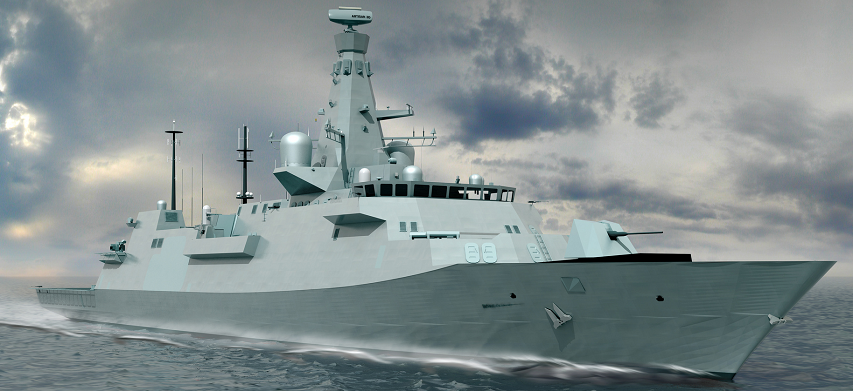
An artist’s rendition of BAE’s Type 26 Global Combat Ship, which was selected as the Canadian Surface Combatant design in 2019, the most recent “largest single expenditure in Canadian government history” (as all major weapon systems purchases tend to be).
(BAE Systems, via Flickr)
On purely economic grounds, it would often make sense to add Canada’s order on to existing US, British, or other allied military orders to benefit from the economies of scale … but pure economic benefits don’t rank highly on the overall scale of importance. There’s also the understandable desire of the government to buy fewer items with wider capabilities as the government’s requirements for the military change with time and circumstance.
Were Canadian defence planners too cavalier in their requirements and design modifications? Maybe. Looking at it from their perspective, though, we should appreciate that they thinking about capabilities for a ship that Canada will use until the 2100s.
Doubts about the CSC are going to keep multiplying. The per unit costs can only increase so much before people start seriously discussing reducing how many of them will be built. You can be sure that some within government are already asking “Why 15? Why not 12?” Serious concerns are also being raised about whether the defence budget can afford to maintain CSC and keep them technologically up to date after the fleet is introduced. Given the CAF’s personnel recruitment troubles, moreover, it’s unclear if the RCN will have enough sailors to operate the full fleet. The first CSC that hits the water, furthermore, will have all sorts of kinks and problems that will need to be sorted out. That’s standard for first ships off the line, but you can be sure that every failing will be met with handwringing and charges of incompetence.
To address these concerns, the government must let DND/CAF better explain what the CSC is designed to do and why it needs to do it. Simply telling Canadians that it’s the right ship isn’t enough when it’s easy to point to lower-cost alternatives. As well, the government needs to be far more transparent about estimates of costs and what’s driving them. Political and public support for the CSC shouldn’t be taken for granted, and growing concerns about the program can’t be simply brushed away.
July 18, 2023
Seaplanes? How 1940s. No, we’re seeking to “leverage emerging technologies” instead
CDR Salamander wonders about a modern need for military sea rescue capability that the US Navy filled with flying boats and seaplanes during the Second World War, then supplemented with helicopters during Korea and Vietnam. For ocean search-and-rescue in a combat environment in the present or near future, what are the USN’s plans?
I will be the first person to admit that good, well-meaning, and informed people can disagree with seaplanes in general or the US-2 specifically, but they have to engage the conversation. Directly argue the requirement or offer realistic alternatives.
This does neither. If anything is demonstrates the narrowness of thought and fragility of substance used in opposition.
What an patronizingly toxic stew that answer is. I highly doubt Lung typed out that answer himself, so my commentary below is not directed at him personally, but … and it is what comes after the “but” that counts — but at the three-digit J or N code that extruded that from the random acquisitions professional statement subroutine from ChatGPT.
Let’s give that answer a full Fisking;
- “The Indo-Pacific operational environment has evolved significantly since World War II”:
Let me check my WWII Pacific chart, my Vietnam War era globe, and GoogleEarth … and … no. The geography has not changed. The distances have not changed. The requirement of thousands of years to take and hold territory or eliminate your enemy from access to it has not changed. All the little islands, regardless of what Al Gore and John Kerry say, are still there. As we are seeing in the Russo-Ukrainian War, a million PPT slides saying so does not change the fundamentals of war.
Sentence one is invalid.
- “The employment of seaplanes today would not meet the operational demands and current threat scenario.”
Is there an operational demand for us to rescue downed airmen and to be able to reach remote islands without airfields? Yes. Does your “current threat scenario” run from Northern Japan through to Darwin, Australia? Yes.
Sentence two is invalid.
- “However, we support the continuous development of new and innovative solutions that may provide solutions to logistical challenges.”
So, you define “new” as something that only exists on PPT slides? By “continuous development” you mean never matures as a design that goes into production. By “innovative” you mean high on technology risk. Undefined program risk. Unknown design risk. No known production line or remote estimate to IOC, much less FOC when we know that the next decade is the time of most danger of the next Great Pacific War.
Sentence three is irresponsible and professionally embarrassing given the history of transformational wunderwaffe this century.
- “As an example, DARPA’s Liberty Lifter X-Plane seeks to leverage emerging technologies that may demonstrate seaborn strategic and tactical lift capabilities.”
Well, goodness, we will have to micro-Fisk this gaslighting horror show of a sentence. To start with, they are talking about either this from General Atomics;
… that could only be used on a very few select beaches under ideal weather in a completely permissive environment and could only be used for one specific mission and nowhere any possible hostile aircraft or ground forces. Also looks like we’d need a whole new engine and a small town’s worth of engine mechanics to maintain the maintenance schedule on those engines.
Then we have this offspring of an accidental mating of the Spruce Goose with the Caspian Sea Monster idea from Aurora Flight Sciences;
I give the odds of either one of those taking to the air prior to 2035, if ever, on par with a return of the submarine LST of Cold War fame (deck gun not included).
Let’s get back to the wording of that dog’s breakfast of a final sentence. Feel slimy reading it? You should;
- “seeks to leverage” — that is just a way of saying, “hope in magic beans.” Gobbledegook.
- “emerging technologies” — oh, you mean something that hasn’t left the computer, white board, or PPT slide.
- “that may demonstrate” — so, even if our magic beans managed to fuse unobtainium with Amrita, we’re not really sure if the strip mining of strange blue creatures’s holy sites and drilling holes in the soft pallet of whale-like thing will result in something of use.
- “strategic and tactical lift capabilities” — I’m sorry, an eight or ten-engined aircraft that any goober with a 1960s-era iron-sighted RPG-7 could target at maximum range is going do anything “tactical” — especially at the expected price of those things and the resulting precious few that wind up displacing water. Oh, and you admit that it will only be used for cargo, so it can’t do the full range of possible missions the US-2 can … just cargo. On just a few beaches that are fully surveyed ahead of time. At the right tide. In the right weather. In a 100% safe and permissive environment.
- The final sentence is a caricature.
Rep. Austin Scott (R-GA) should feel at least mildly insulted by this reply. It was a serious question given a canned answer that, slightly modified, could have been provided at any time in the last quarter century by the lethargically complacent maintainers of the suboptimal habits of the mistakingly entitled acquisitions nomenklatura
May 26, 2023
CH-124 Sea King; Legendary ASW helicopter and example of a deeply flawed defense procurement process
Polyus
Published 21 May 2023The Sea King was a legendary aircraft in the history of the Royal Canadian Navy. It filled the role of hunter and killer in the Cold War against Soviet submarines. By the mid-90s the situation had changed and their retirement seemed eminent. How naive. The process of finding a replacement for this workhorse would be an election promise by government after government for over 30 years. Its replacement, the CH-148 Cyclone, became operational in 2018. This allowed the 55 year old workhorses to finally retire.
(more…)
April 27, 2023
Spending more on defence requires more than just turning on the financial taps
In The Line, Philippe Lagassé explains why just pouring more money into the Department of National Defence won’t automatically improve our defence capabilities:
Canadian defence spending is back in the news, thanks to an open letter urging the government to spend two per cent of GDP on the military and a leaked document suggesting Canada won’t hit that NATO target. Like ending the monarchy, defence spending is one of those issues that gets lots of attention once or twice a year, only to fade away before any serious discussion takes place. It’s unlikely that this time will be any different.
[…]
Even if the government wanted to greatly increase defence spending, though, it would have trouble spending that money effectively in the short term. While more money is needed over the long term, the Department of National Defence (DND) and Canadian Armed Forces (CAF) have to first build up their capacity to spend a much larger budget. As they do so, however, our historical tendency to reduce defence expenditures after pivotal moments should always be kept in mind.
The DND and CAF are already straining to implement the capital equipment and infrastructure programs that were announced in the 2017 defence policy, Strong, Secure, Engaged. This reflects the fact that department’s capacity to manage procurements has to be built back up after decades of anemic capital spending. There aren’t enough people to move the programs that are currently planned, let alone new ones that could be added. Additional money could be funneled to existing projects, but that wouldn’t be enough to cause an increase to two per cent of GDP in the coming years. The capabilities Canada is currently buying will probably be far more expensive to maintain in the future than the government realizes, which strongly suggests that we do need to gradually get to that number, but this reinforces the need for caution and for managing expectations. If ministers insist that new money be attached to still more new capabilities, DND/CAF will not only have trouble acquiring them, but will be unable to afford them.
One could argue that DND/CAF could get around its capacity challenges by simply buying more equipment “off the shelf”. Instead of getting more people to tackle complex procurements and infrastructure projects, the defence department should focus on simpler acquisitions that require less management. It is important to note, though, that “off the shelf” procurements aren’t an obvious solution either — DND and the CAF don’t specify requirements for the hell of it. Many project requirements reflect the need to integrate new capabilities into the existing force, which is no small feat when mixing new and old technologies and operating from installations across a massive country. Projects that gravitate toward “off the shelf” solutions, moreover, can be challenged by competitors who contend that they can develop a new capability that better meets Canada’s needs. Bombardier‘s response to the government’s plan to buy Boeing’s P-8 Poseidon aircraft to fulfil the Canadian Multi-mission Aircraft (CMMA) project is a recent example.
Canada also tends to favour platforms that can perform various missions, which further complicates “off the shelf” procurements, since the equipment sitting on the shelf may not do everything the CAF needs it to do. Unless we want the CAF to be less capable, the way to address this issue is to acquire more platforms that do specific things. The problem is that the CAF would need more people to acquire, operate, and maintain these additional fleets, still more money to sustain this extra equipment, and yet more infrastructure to store it. This approach promises to exacerbate the very problems it’s supposed to solve.
April 24, 2023
Canada won’t meet its defence spending targets, and Trudeau is totally fine saying this to our allies, if not to the public
Canadian defence freeloading has been a hallmark of Canadian government policy since 1968, and as The Line confirms in their weekend dispatch, it should be no surprise that Justin Trudeau is okay continuing his father’s basic policies:
A story we’ve been watching in recent weeks was the remarkable leak of sensitive U.S. national security documents onto the dark web, and from there, widely across social media. A young member of the Air National Guard has been arrested and now faces serious charges. News reports suggest that he had access to classified material at work and began sharing it privately with a small group of online friends, apparently simply to impress and inform them, with no broader political agenda. Some of those friends, in turn, appear to have leaked the documents further afield. It took months before anyone noticed, but once picked up by several individuals with large followings — including some who are none-too-friendly to the U.S. and Western alliance — the story exploded and the full scope of the leak was finally discovered.
This is, for the U.S., a huge embarrassment and a diplomatic nightmare. For us, it was simply a fascinating story. This week, though, we suddenly had the coveted Canadian Angle: the Washington Post claims to have reviewed one of the leaked documents, apparently prepared for the American Joint Chiefs of Staff, that assesses Canada’s military serious military deficiencies, and also reports that Prime Minister Justin Trudeau has privately told fellow NATO leaders that Canada isn’t going to hit NATO’s two-per-cent-of-GDP spending target.
To wit:
“Widespread defense shortfalls hinder Canadian capabilities,” the document says, “while straining partner relationships and alliance contributions.”
The assessment, which bears the seal of the U.S. Joint Chiefs of Staff, says Germany is concerned about whether the Canadian Armed Forces can continue to aid Ukraine while meeting its NATO pledges. Turkey is “disappointed” by the Canadian military’s “refusal” to support the transport of humanitarian aid after February’s deadly earthquake there, the document says, and Haiti is “frustrated” by Ottawa’s reluctance to lead a multinational security mission to that crisis-racked nation.
Your Line editors just sort of sighed heavily and rubbed their temples when they read that. It was, to us, nothing we didn’t know already. It was actually almost some kind of a relief to know that the PM will at least say privately what he won’t admit publicly: we aren’t living up to our pledge, and don’t plan to.
The Post says that Trudeau told NATO that there won’t be much more military spending in this country until the political situation here changes. We aren’t sure if he meant the priorities of the voters or the composition of our parliament. It doesn’t matter — it’s true either way. We are disappointed, but again, in no way surprised, to see Trudeau seeing this as an issue that he’ll just accept as-is, as opposed to attempting the hard work of showing actual leadership. He’s always been more about the easy path of demonstrative gestures instead of working hard to achieve real change.
But hey. In this, he has a lot of company. The Tories under Harper were marginally better on defence, but not nearly good enough. We have little faith — next to none, really — that PM Poilievre would do any better on defence. What bums us out the most about this issue is that we recognize and even agree that the choice to neglect defence and shovel those dollars instead into other, more popular vote-buying files does indeed make political sense. It’s what the voters want. We wish it were otherwise. We’ve spent big chunks of our careers trying to change their minds. Our record to date is one of total, utter failure.
Still, never say die, right? So we’ll make this point: we understand and accept the criticism sometimes made by Canadian commentators, who argue that the two-per-cent-of-GDP target is arbitrary and somewhat meaningless. We don’t entirely agree — targets are useful, and two per cent seems reasonable. But we’d be open to an argument that Canada could still punch above its weight in the alliance, even while spending less, if we could deliver key capabilities.
But … we can’t. We probably could, once upon a time, but we can’t even do that now. The air force is a mess. The navy is a mess. The army is a disaster, and couldn’t even send Nova Scotia all the help it asked for after Hurricane Fiona. Sending a token plane or ship on a quick foreign jaunt is symbolism, not above-weight-punching. And the symbolism taps us out.
So we have to pick what we’re doing here, fellow Canucks. We can meet the two-per-cent target. We can find other ways to meaningfully contribute. Or we can do neither of those things, and admit it, but only in private. Right now, alas, we’ve chosen that third option. We see no sign that’ll be changing any time soon.
Pierre Trudeau discovered that Canadian voters are all too willing to accept “peace dividends” in the form of shorting defence spending to goose non-military spending, and few prime ministers since then have done much more than gesture vaguely at changing it. Worse, it’s also quite accepted practice for defence procurement to prioritize “regional economic benefits” over any actual military requirement, which often means Canada buys fewer items (ships, planes, helicopters, tanks, trucks, etc.) at significantly higher prices as long as there’s a shiny new plant in Quebec or New Brunswick that can be the backdrop for government ministers and party MPs to use as a backdrop during the next election campaign. Military capability barely scrapes into the bottom of the priority list on the few occasions that the government feels obligated to spend new money on the Canadian Armed Forces.
Worse, every penny of “new” spending on the military gets announced many times over before any actual cheques are issued, which helps to disguise the fact that it’s the same thing all over again — sometimes for periods stretching out into years. The Canadian military has a well-deserved reputation for keeping ancient equipment up and running for years (or decades) after all our peer nations have moved on to newer kit. It’s a tribute to the technical and maintenance skills of the units involved, but it probably absorbs far more resources to do it over replacing the stuff when it begins to wear out, and it reduces the number available to, and the combat effectiveness of, the front-line troops when they are needed.
January 2, 2023
An in-depth look at the Type 26 frigate design
Navy Lookout
Published 31 Dec 2022The Type 26 frigates being built for the Royal Navy [and Royal Canadian and Royal Australian navies] are specialist submarine hunters but with a range of other capabilities. This video provides a primer on the overall warship design, its weapons, sensors and decoys.
(more…)
August 6, 2022
Canada’s New Warship
Frontline Pros
Published 12 Feb 2022The Type 26 Frigate will become the first dedicated warship Canada has built in decades. Soon the Royal Canadian Navy will take ownership of 15 of these vessels, making them the largest owner of the Type 26 in the world.
(more…)

